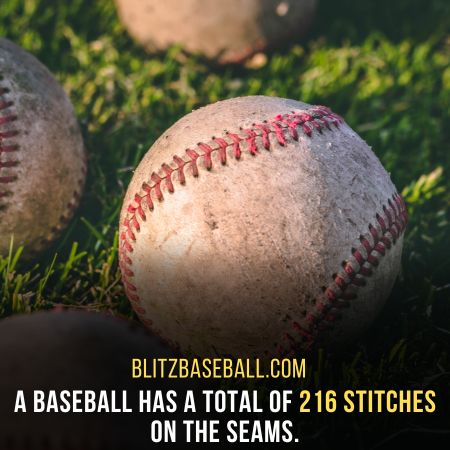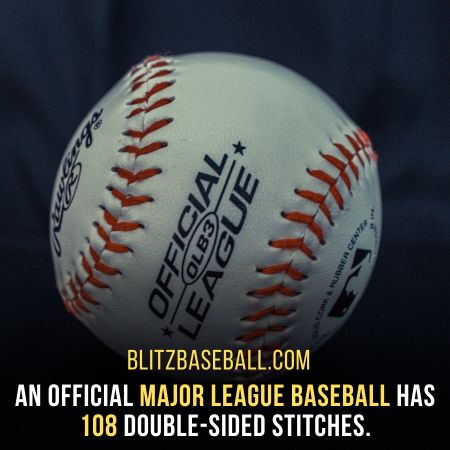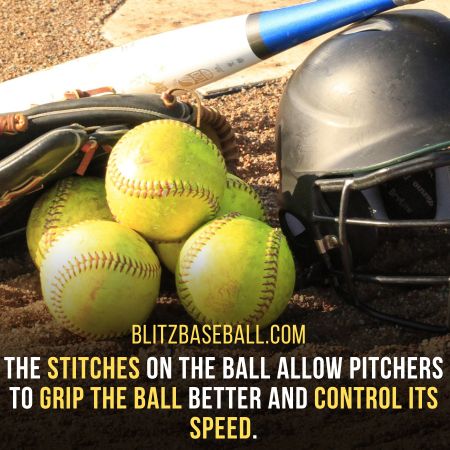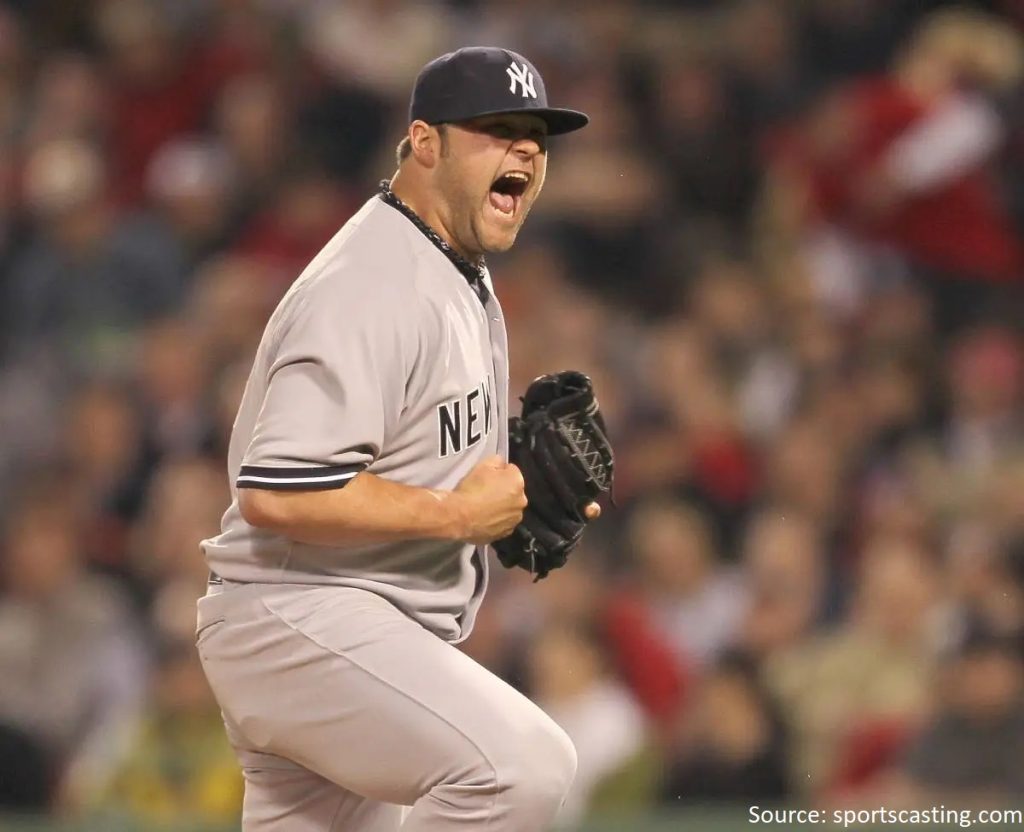Baseball enthusiasts have long debated how many stitches are on a baseball: 216 or 108? Shedding light on this mystery, it is revealed that a baseball boasts a total of 216 stitches on its seams, with 108 double-sided stitches.
While the first and last stitches remain hidden, the significance of stitching cannot be understated. Pitchers rely on the grip provided by these stitches, while the stitching also helps maintain the ball’s shape and control its pace.
Join us as we delve into the manufacturing process, the evolution of stitching, and the impact it has on the game.
Key Takeaways
- A baseball has a total of 216 stitches on the seams.
- An official major league baseball consists of 108 double-sided stitches.
- The stitches allow pitchers to grip the ball better and control its speed and trajectory.
- Special baseballs with different colored stitches are used to celebrate occasions during the season, such as the All-Star game, Home Run Derby, and World Series.
How Many Stitches Are on a Baseball?
The official major league baseball consists of 108 double-sided stitches, with a total of 216 stitches on the seams. This has sparked a debate over the number of stitches on a baseball: 216 or 108?
To explore the reasons behind this discrepancy, we must delve into the manufacturing and stitching process of a baseball. The ball is made using rubber and cowhide, with two rubberized hemispheric shells and a layer of red rubber to create the core. The cowhide is then stitched onto the ball using red thread.
It is important to note that the first and last stitches remain hidden on the baseball, hence the difference in the total number of stitches. The stitches play a crucial role in the game, aiding pitchers in grip and control, as well as helping batters identify the spin of the ball.
The Significance of 216 Double-Sided Stitches on a Baseball
Rubber and cowhide are used in the manufacturing process to create a baseball with 216 double-sided stitches. The significance of these stitches lies in their impact on the game of baseball.
The stitching techniques have evolved over time, with the number of stitches increasing from the original 108 to the current 216. The additional stitches provide better grip for pitchers, allowing them to control the ball’s movement and speed. The stitches also help maintain the ball’s shape and control its trajectory when it is thrown.
Furthermore, the red stitches on the baseball allow batters to identify the spin of the ball, helping them anticipate its movement.

Overall, the 216 double-sided stitches on a baseball play a crucial role in the game, enabling both pitchers and batters to showcase their skills and make the game more exciting.
Unveiling the Mystery: The Hidden Stitches on a Baseball
Using waxy red thread, MLB baseball manufacturers stitch the cowhide cover to reveal the hidden stitches on a baseball. The art of stitching requires precision and skill, as the stitches play a crucial role in the performance of the ball.
The use of red stitches has a rich history, dating back to 1998 when it became the standard. These stitches not only add visual appeal but also serve a functional purpose.
Pitchers rely on the stitches to grip the ball better, control its trajectory, and maintain its shape. The red color helps batters identify the spin of the ball, giving them an advantage at the plate.
The stitching process involves hand stitching with red thread, followed by the use of a rolling machine to ensure an even surface. The combination of techniques and tools used in baseball stitching has evolved over time, resulting in the iconic red stitching we see today.
From Red Thread to Major League Tradition: The Evolution of Baseball Stitching
Cowhide covers have undergone significant changes throughout the years, transitioning from uncolored thread to the now iconic red stitching used in Major League Baseball.
The history and evolution of baseball stitching is a fascinating journey that showcases the attention to detail and craftsmanship involved in creating these iconic sports balls.
Originally, the stitches on a baseball were made with uncolored thread, but in 1998, the use of red stitches became the standard. This change not only added a visually striking element to the baseball, but it also served a practical purpose by helping batters identify the spin of the ball.
Additionally, special baseballs play a significant role in MLB celebrations. These baseballs are adorned with stamps and different colored stitches to commemorate occasions such as the All-Star game, Home Run Derby, and World Series. By using these special baseballs, MLB management aims to make these memorable events even more special.
The Intricate Process of Manufacturing a Baseball: Exploring the Materials and Techniques
During the baseball manufacturing process, various materials are carefully assembled to create the iconic sports ball.
Rubber and cowhide are the main materials used, with two rubberized hemispheric shells and rubberized cork attached. Rubber gaskets fill the space between the shells, and a red layer is molded to cover the rubber, creating the core.
A thin layer of cement is applied before using cowhide to make the ball. The art of hand stitching plays a crucial role in baseball manufacturing. Two figures and eight patterns of cowhide leather are used to cover each half of the ball.

The cowhide is submerged in a special solution to manipulate and mold it, and hand stitching with red thread is used to ensure durability and precision. Finally, a rolling machine is used to make the stitches and cowhide surface even.
This intricate process results in a baseball that is ready for the game.
The Impact of Baseball Stitching: Grip, Control, and Spin
The intricate process of manufacturing a baseball involves various materials and techniques, culminating in the stitching of the cowhide covers. This stitching plays a crucial role in the game, impacting pitch movement and enhancing pitcher control.
The stitches on a baseball allow pitchers to grip the ball better, ensuring a more controlled release. This improved grip helps maintain the ball’s shape and control its pace, allowing pitchers to vary the speed and movement of their pitches. The stitching also affects the trajectory of the ball when it flies, with different stitching patterns creating unique spin and movement.
Furthermore, the red stitches on a baseball aid batters in identifying the spin of the ball, enabling them to anticipate its trajectory and adjust their swing accordingly.

Frequently Asked Questions
What Is the Specific Reason for Using Red Thread to Stitch a Baseball?
The specific reason for using red thread to stitch a baseball is to make the stitches more visible. This helps batters identify the spin of the ball. Alternatives to red thread stitching may not provide the same level of visibility.
How Are the First and Last Stitches on a Baseball Hidden?
The first and last stitches on a baseball are hidden to ensure a smooth surface for better playability. Techniques used to hide them include overlapping the cowhide and using a rolling machine to make the surface even.
How Did the Use of Red Stitches Become the Standard in Major League Baseball?
The origin of red stitches in major league baseball can be traced back to 1998. It was an evolution in response to the need for better visibility and to help batters identify the spin of the ball.
What Materials Are Used to Make the Rubberized Hemispheric Shells of a Baseball?
The rubberized hemispheric shells of a baseball are made using rubber and cowhide. These materials are an essential part of the manufacturing process, ensuring the ball’s durability and performance on the field.
When Did Cowhide Start Being Used to Make Baseballs Instead of Horsehide?
Cowhide baseballs replaced horsehide baseballs as the preferred material in the manufacturing process. The switch occurred in 1974, marking a significant change in the composition of baseballs used in professional games.
